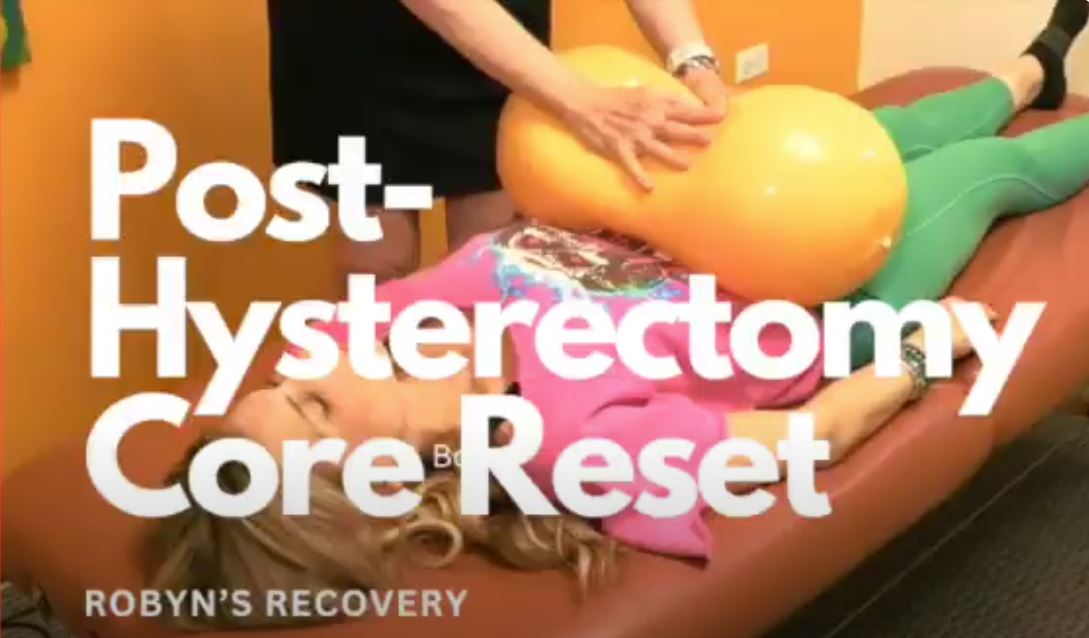Weird Abdominal Aches and Pains? 😞 Might Be After Effects from Surgery
The theme for this week …
Recently I’ve written about the many benefits of being physically active. Now we switch to the medical disruptors which may challenge your ability to be active.
This week … the after-effects of minimally invasive surgery. Although minimal, it often disrupts how your muscles work together, and Robyn’s story shows how Bridging® helped. Read on …
Minimally invasive surgery? It can still cause major disruption to your core function.
Staying physically active is your goal. But then surgery happens for either a planned, or unplanned reason, and knocks you off track.
You may be one of the 15 million in 2023 who received help from a minimally invasive laparoscopic abdominal procedure. The most common reasons are:
- gallbladder removal
- hernia repair
- kidney procedures
- bowel procedures
- hysterectomy
- appendix removal
- oophorectomy
Once you’ve recovered and been cleared for exercise, you’re excited to get back into your active routine, often with your workout friends.
BUT once you try your workout/activity –
- you don’t feel quite right,
- have pain, or
- it’s just much harder than you remember?
Why doesn’t your body move as easily?
So, you give yourself a little more time, ask your doctor at a follow-up, and try a round of physical therapy to strengthen or stretch out. You might also try massage therapy for scar tissue work.
It. Still. Hurts. Or feels weird.
Will this ever change? Or are you stuck with feeling this way?
Why does laparoscopic surgery still cause movement issues?
Although minimally invasive, there are three parts of the laparoscopic procedure which impact core muscle function. These are:
- Distended abdomen: Gas is used to expand your abdomen to create space for the tubes used for surgical instruments. The disrupted layers of muscles often forget how to work together after surgery.
- Insertion/withdrawal of tubes and instruments: The movement at angles through your abdomen causes additional disruption to the muscles crossing from back to hip through the abdominal cavity.
- Scaring: Even though the surgery is much less invasive there are still internal scars as part of the healing process. The scars are stiff and often inhibit movement between the core and legs.
How Bridging® is able to help
Help for your pain, coordination and balance comes from two unique parts of our solution:
- Specificity: The Bridging® process assesses your movement to identify the specific micromovement flows and transitions that have been affected by the laparoscopic surgery.
- Muscle reset process: The gentle rocking and stretching motion of Bridging® quickly resets the identified muscle coordination allowing you to instantly move more easily and confidently.
The whole goal is to enable you to be back out doing what is important to you!
Insight of the week from Cara
Every week I meet new clients, and many have had a minimally invasive laparoscopic procedure in their past. It is often the first thing we address because the impact to core movement is so significant.
How a laparoscopic surgery limited Robyn’s yoga
Such was the case with Robyn. She struggled with her yoga, as the biggest leg movements caused her pain. She just didn’t feel like she could access the benefits of yoga as she had in the past.
With her hysterectomy nearly three years in the past, Robyn was ready to get on with her life which included an advanced yoga practice which she valued for the physical challenge, the mental calm, and the friends in her classes.
Her surgery was minimally invasive, her recovery went well, and she was cleared for activity. She tried to get back to her yoga but had to dial the intensity down so much that it wasn’t very fulfilling.
Although she could relate the surgery to her abdominal pains and pulling sensation in her thighs, she hadn’t found answers or solutions yet.
What we found
The muscles in her abdomen were tight and not able to interact with her legs. The right side was more restricted. Her body was still protecting the trauma which occurred with the procedure.
What we did
Once we ruled out other factors (injuries, accidents), this is the process we used to get Robyn back to better core function:
- Support: A common starting point for Bridging® after a medical procedure is supporting the area which has been disrupted. We love to use our peanut balls for their broad, gentle support.
- Guide: Subtle movement is added to guide the muscles back to the ways they move together. Again, the peanut balls are a great tool to support uniform movement in the core.
- Reset: Supporting interconnected movements from the core to the legs and adding a subtle stretch resets the muscle memory. You’re on your way to moving better!
How did Robyn feel?
A week later this was her update.
“Feeling GOOD. I haven’t had a chance to do core work, however I’m finding that I’m holding myself differently. I noticed as I was standing today that I’m standing straighter … and when I was sitting, that felt differently as well.”
Although there is more to fine-tune with her leg movements, she is easily able to do most everything these days and feels good!

